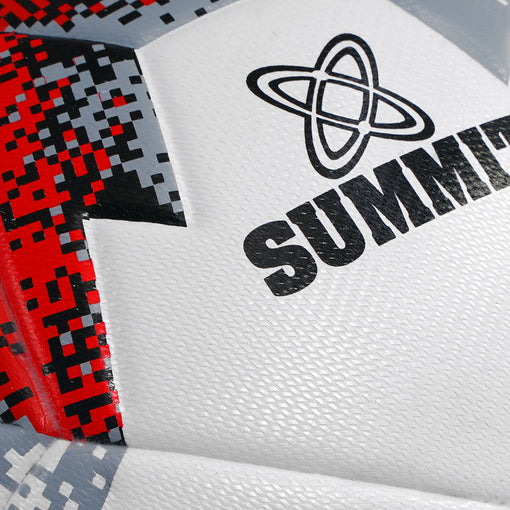Soccer - How many panels does a soccer ball have and why?
Posted by SUMMIT TEAM
Soccer balls most commonly have 32 panels, made up of both hexagons and pentagons
The modern soccer ball (without going back too far) is commonly known to have 32 panels. This is the standard black and white ball with hexagons and pentagons. Today you will find footballs coming in a wide range of panel amounts, shapes and styles.
A cynical person would say that this is just a marketing ploy, and in some cases you would be correct. But there are some benefits to having different panel shapes. There are documented cases of high-profile balls that have not flown well due to the aerodynamic properties of the ball, which shows there are performance differences to be achieved (for better or worse).
Less or more seams/ridges will change the way the air flow goes around the ball. Without wind tunnel or computer modelling, we can’t say specifically what is going to happen but there will be direct changes to flight and feel.
In most cases, the affect is more down to the player’s style or preference. There are players that like traditional style football, while others like the larger paneling.
We know that different players like different balls, here at SUMMIT we try to design a variety of characteristics into the range.
Why are some soccer balls smooth, textured and embossed?
In the mid 2000’s soccer balls started to see a range of textures/graining added to the surface of the material. Before this, the materials used were predominantly smooth. The main surface differences were the glossiness of the material, from high gloss to matte. Today there is an ever-growing range of textures, feels, glossiness, and embossing’s (embossing is the deeper style of ridge/bump/pressing into the surface of the material. The following explains the differences and terms for each.
How do different textures change the ball?
Textured/Graining
Is a light surface imprint in the material of the ball. When manufacturing the PU, TPU, PVC, the material is rolled over a drum that gives the texture. Although there is essentially no difference to material, the texture does change the characteristics of the ball in a couple of ways.
It should give a little more grip off the boot for controlling spin and direction. It should also allow keepers to get a better glove on the ball.
SECONDLY:
It gives the outer a softer feel to the touch. This might come from micro-flexing on the creases of the pattern, but has yet to be tested to get a definitive answer.
LASTLY:
Lastly, it will have an affect on flight. This last reason is dependent on how the ball is moving through the air and the speed, which is reliant on the quality of the player.
In theory, one compliments the other – the good player will be able to use the grip, flight and spin to their advantage.
Embossing
Embossing is a deeper style of imprint into the surface of the material. Although this can be done by pressing shape onto the un-sewn panel, it is usually done with added heat. A metal casting with a heating element will have the shape that is to be embossed added. This presses down onto the material sheet and creates the embossing. This is a good way to add some design and feel to a ball, and mainly seen on larger panel balls.
There are a few advantages of adding embossing to a ball design.
Large indents will affect the way the air moves over the ball. Depending on the shape, this could give lift or curve to its flight.
SECONDLY:
Secondly, it could add some strength to the panel. Like corrugations in engineered materials (metal, plastics etc.), waves/indents can allow flex or strength in a system.
Smooth/Glossy and Matte
Smooth, glossy and matte surfaces are also available, and I would usually say this is personal preference. There are some differences with how the ball feels, and in some cases, how it collects moisture/dirt. This is only very minimal, but a super smooth or glossy ball should slide over surfaces a little quicker. They can also have a harder initial touch, but this feeling can be a false impression. A good glossy ball should have a soft foam backing and can actually feel very positive in play.
TAGS:






